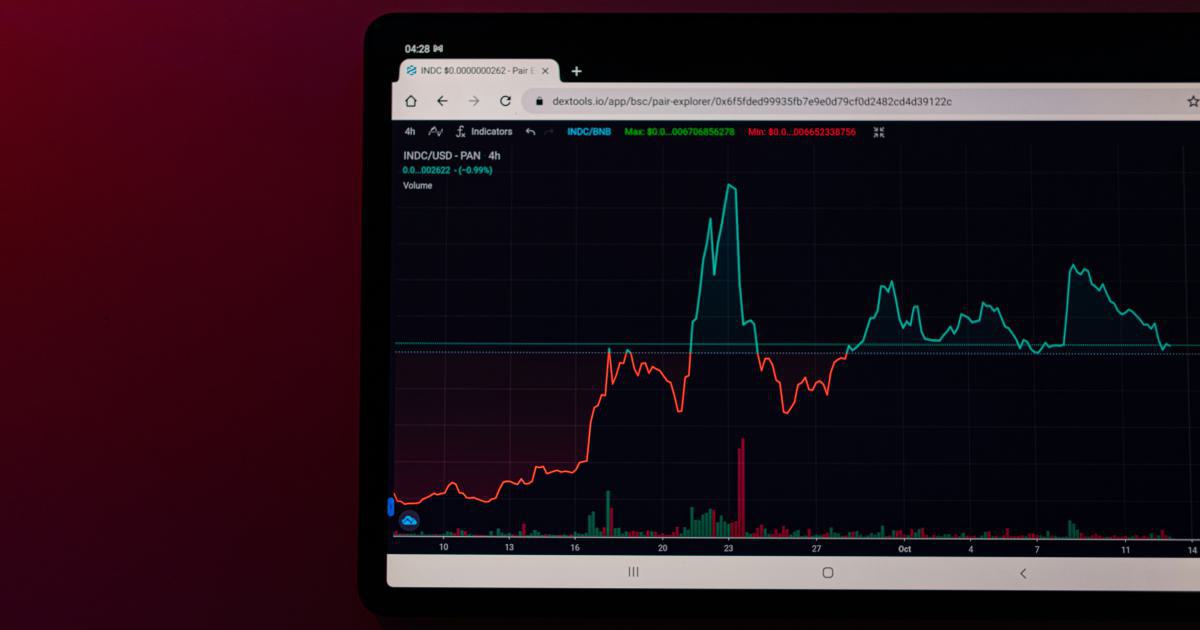Avoiding Common Pitfalls of Copy Trading Systems

Copy trading systems have emerged as one of the most popular ways for both novice and experienced investors to engage in the global trading arena. By allowing users to mirror the trades of seasoned professionals, these platforms promise a simplified path to market participation. However, as enticing as these systems may be, they come with inherent risks that can lead to substantial losses if not managed correctly. In this comprehensive guide, we will explore the common pitfalls that investors may encounter when using copy trading systems, dissect their underlying causes, and offer actionable strategies to mitigate these challenges. Whether you are new to the concept or have been actively involved in the trading community for a while, understanding these potential issues is critical to safeguarding your investments and ensuring long-term success.
At the heart of copy trading systems is the concept of leveraging the expertise of more experienced traders. The promise is alluring: by replicating trades, you can theoretically achieve similar returns without needing to master the intricacies of market analysis yourself. However, the complex interplay between human behavior, automated algorithmic decisions, and unpredictable market conditions can lead to outcomes that diverge substantially from expectations. This article delves into these issues, providing insights that will help you navigate the multifaceted risks of copy trading.
Understanding Copy Trading Systems
Copy trading systems are designed for investors who wish to delegate trading decisions to experienced professionals or sophisticated algorithms. These platforms operate by linking your trading account to that of a chosen trader. Once connected, every trade executed by the leading trader is automatically replicated in your account at the same ratio as determined by your chosen settings. This approach allows you to benefit from the market insights and expertise of those who have already proven themselves in volatile markets.
How Copy Trading Works
At its core, copy trading operates on a simple principle: transparency and replication. Platforms provide detailed statistics, performance histories, and risk profiles of expert traders, allowing you to select the individual or strategy that best aligns with your own financial goals and risk tolerance. When you choose a trader to follow, their trades—whether they involve equities, foreign exchange, commodities, or cryptocurrencies—are duplicated in your account automatically. This seamless process enables even those with a limited background in trading to participate in complex market strategies.
Benefits and Opportunities
The primary advantage of copy trading systems lies in their accessibility. Novice traders can bypass some of the learning curves associated with market analysis, while seasoned investors can diversify their portfolios by tapping into multiple strategies simultaneously. Furthermore, the social aspect of copy trading fosters a community environment where ideas are shared, and best practices are discussed openly. This democratization of trading expertise can be a powerful tool for those looking to optimize their investment strategies.
The Dark Side: Potential Pitfalls
Despite the many benefits, copy trading systems are not without their pitfalls. Beneath the surface, these platforms can hide risks that may lead to significant financial losses. A failure to properly assess the risk profile of a trader, misleading performance metrics, poorly managed algorithms, and inadequate risk management strategies can all contribute to an adverse trading experience. In many cases, the very features that make copy trading attractive—the promise of easy profit and minimal personal oversight—can lead to complacency, leaving investors vulnerable in rapidly shifting markets.

Common Pitfalls in Copy Trading Systems
The popularity of copy trading systems has grown tremendously, but with this growth comes a set of challenges that every investor must be aware of. In this section, we break down some of the common pitfalls that can undermine even the most promising strategies.
Pitfall 1: Lack of Proper Risk Management
One of the most frequently observed issues in copy trading is the absence of robust risk management techniques. Many investors, particularly beginners, assume that merely replicating the trades of a successful trader will inherently manage risk. However, risk management involves more than simply following a leader; it requires actively engaging with the strategies being copied and understanding how to balance exposure across multiple asset classes.
Without setting strict stop-loss orders, regularly reviewing portfolio diversification, and establishing exit strategies, investors may find themselves caught in a downtrend. In many cases, a single adverse trade from the copied leader can cascade into significant portfolio losses if not adequately controlled. This underscores the importance of implementing your own risk management parameters to complement the strategy of the trader you choose to follow.
Pitfall 2: Over-Reliance on Automated Systems
Copy trading platforms are built on sophisticated algorithms that constantly monitor market conditions. Although these algorithms enhance the speed and efficiency of trade replication, they might not always adapt well to unexpected market events. Over-reliance on automation can lead to scenarios where sudden market shifts, such as flash crashes or geopolitical events, cause the system to execute trades without the necessary human oversight to intervene.
Furthermore, algorithmic trading systems are only as good as their parameters and the data upon which they are built. If the foundational models fail to predict certain market anomalies, the resulting trades can lead to unexpected losses. Investors should therefore remain vigilant, continuously monitoring market conditions even when using automated systems.
Pitfall 3: Inadequate Due Diligence on Trader Selection
Another common pitfall is the lack of proper due diligence when selecting which trader to copy. Platforms often present performance histories and risk metrics; however, these metrics can sometimes be misleading if not scrutinized carefully. For example, a trader may have enjoyed a prolonged period of successful trades in a stable market environment, but that performance does not necessarily translate to effectiveness in more volatile conditions.
Many investors fall into the trap of choosing traders based solely on high returns without considering the underlying volatility or trade frequency. It is essential to perform a comprehensive review that includes historical performance during varied market conditions, the frequency and volume of trades, and the trader’s risk management practices. Skipping this step can result in copying strategies that are not sustainable in the long-term.
Pitfall 4: Misinterpretation of Performance Metrics
The allure of stellar performance figures can be deceptive. Performance metrics provided by copy trading platforms may not always account for factors such as market anomalies, temporary market conditions, or even the influence of large-scale economic events. Without a robust understanding of what these numbers actually represent, investors could be misled into believing that a trader’s past performance is a reliable indicator of future success.
Moreover, certain platforms may be prone to selective data presentation, showing only the best results while obscuring periods of underperformance. It becomes crucial for investors to dig deeper into performance charts, understand the context behind the numbers, and maintain a skeptical perspective when evaluating these metrics.
Pitfall 5: Overtrading and Emotional Biases
Copy trading systems can inadvertently foster a sedentary form of overtrading. Some investors, driven by a desire to maximize returns, might decide to replicate multiple traders simultaneously without fully understanding the compounding risks. This behavior can lead to overexposure in the market, where the diversification benefits are negated by the sheer volume and frequency of trades.
Emotional biases also play a significant role. Investors may become overly attached to a trader’s success story, ignoring red flags or diverging from rational decision-making processes. When emotions drive financial decisions, it can lead to impulsive actions that undermine long-term strategy. Maintaining objectivity and sticking to predefined trading rules is paramount in avoiding these pitfalls.

Identifying Risks in Copy Trading Systems
In order to avoid the pitfalls described above, it is crucial to first identify the risks inherent in the use of copy trading systems. This section provides an in-depth analysis of the risk factors associated with these platforms and offers guidance on how to assess potential liabilities.
Market Volatility and Its Impact
Market volatility is a key risk factor that cannot be ignored. Copy trading systems often operate in highly liquid markets where price fluctuations are sudden and intense. By copying trades in such environments, investors can inadvertently expose themselves to significant market swings. Understanding the correlation between the volatility of the market and the trader’s performance is critical.
A high return on investment during low-volatility periods may be encouraging, but such performance might not sustain during sudden market downturns. Investors need to evaluate how a trader has handled previous periods of instability and whether their strategies are designed to navigate turbulent times. Historical performance during recessions, corrections, or unexpected global events can be highly indicative of a trader’s true risk profile.
Technology and Platform Reliability
The reliability of the technology behind copy trading systems is another critical concern. Cybersecurity threats, system outages, and technical glitches can all lead to disruptions in trade execution. In some instances, a delayed or failed order execution can leave your portfolio exposed to market movements that occur within seconds, potentially resulting in seconds of significant loss.
Investors should assess the robustness of the platform’s infrastructure. Questions to consider include: How secure is the system? Are there backup protocols in place? How does the platform handle technical failures? Being well-informed about the technology behind your copy trading system can help you safeguard against unexpected interruptions.
Regulatory and Compliance Issues
The regulatory landscape for copy trading systems varies by region and platform, and a lack of adequate oversight can expose investors to fraud or unethical practices. Regulations can impact everything from transparency in performance reporting to the legal responsibilities of the platform operators. It is essential for investors to choose platforms that comply with stringent regulatory standards and maintain a clear, transparent operating structure.
Furthermore, understanding the legal implications of engaging in copy trading—such as the risks associated with tax liabilities or dispute resolution processes—is crucial. Investors should always seek platforms that are fully compliant with relevant financial regulations, and consider consulting with financial advisors or legal experts if there is any uncertainty regarding the platform’s compliance practices.
The Role of Financial Literacy
A common misconception is that copy trading requires little to no financial knowledge. While the process is designed to be user-friendly, a rudimentary understanding of financial markets is indispensable. Without this foundation, investors may struggle to identify potential red flags or misunderstand the implications of certain trades. Financial illiteracy can lead to complacency, making investors more susceptible to mistakes that could have otherwise been avoided by a thorough understanding of market dynamics.
Engaging in periodic educational sessions, following market news, and participating in trading communities can bolster your financial literacy. This increased awareness not only helps in identifying risks but also empowers you to make better-informed decisions when selecting traders to copy.
Best Practices for Avoiding Pitfalls in Copy Trading Systems
With a clear understanding of the challenges and risks involved, it becomes possible to adopt specific strategies that will minimize exposure to these pitfalls. The following best practices offer actionable advice for investors seeking to optimize their copy trading experience.
1. Set Clear Investment Goals and Parameters
Before engaging with any copy trading system, it is vital to have well-defined investment objectives. Determine your risk tolerance, desired return on investment, and the maximum amount you are willing to invest in any given strategy. Establishing these parameters allows you to select traders whose performance and risk profiles align with your financial goals.
Investors should also set strict stop-loss orders and establish clear exit strategies for individual trades. This disciplined approach helps in preventing emotional decisions that often lead to overtrading or mismanagement of portfolios during volatile market conditions.
2. Perform Thorough Research and Due Diligence
Conduct extensive research on both the platform and the traders you are considering. Delve into historical performance data, risk management strategies, and even feedback from other users. Engage with communities, forums, and independent review sites to gather as much information as possible. Look beyond the superficial performance metrics and focus on the underlying strategy, consistency of returns, and risk management practices.
3. Diversify Your Copy Trading Portfolio
Diversification remains one of the most powerful tools in mitigating risk. Instead of placing all your investments on a single trader's strategy, consider copying multiple traders with varied approaches. This diversification can help balance the risk exposure, ensuring that the underperformance of one trader does not drastically affect your overall returns.
4. Continuously Monitor and Adjust Your Portfolio
Even after selecting the right traders, copy trading is not a “set-it-and-forget-it” solution. The dynamic nature of financial markets requires constant monitoring and occasional adjustments. Regularly review your portfolio performance, reassess the risk profiles of the traders you follow, and be prepared to make necessary changes. Many platforms offer dashboards and analytics tools that provide real-time insight into your trading activities, which should be used diligently.
5. Maintain an Independent Decision-Making Process
Although copy trading offers the convenience of relying on someone else’s expertise, it is essential to maintain your own analytical perspective. Do not rely solely on the performance data provided by the platform. Develop your own understanding of market conditions and learn to interpret performance signals independently. This proactive stance will empower you to spot discrepancies and avoid blindly following a strategy that may not be suited to changing market dynamics.

6. Invest Time in Understanding the Underlying Strategies
Every trader or algorithm you copy employs a unique strategy. Take the time to understand these strategies in-depth. This knowledge will help you appreciate the nuances of each approach, identify potential weaknesses, and gauge whether a particular strategy aligns with your own risk tolerance and investment goals. It will also prepare you better for market conditions when rapid decision-making might be required.
7. Leverage Technology for Enhanced Decision-Making
Modern copy trading platforms offer an array of technological tools designed to support investors. Utilize automated alerts, performance tracking dashboards, and risk assessment tools proactively. Moreover, consider integrating external financial analysis software that can simulate various market conditions and stress-test the strategies you follow.
8. Stay Updated on Market Trends and Regulatory Changes
Financial markets are influenced by a myriad of factors including geopolitical events, economic reports, and regulatory updates. Staying informed on market trends and shifts in regulatory policies will help you anticipate changes that could affect your trading environment. Subscribe to reliable financial news sources, attend webinars, and participate in industry forums to remain adaptable in the ever-evolving landscape of copy trading.
Real-World Cases and Lessons Learned
While theoretical discussions are invaluable, real-world case studies offer a practical perspective on the challenges and successes associated with copy trading systems. In this section, we review several scenarios where investors encountered common pitfalls, along with the strategies they implemented to overcome these challenges.
Case Study 1: The Perils of Neglected Risk Management
John, an enthusiastic investor with moderate financial knowledge, decided to copy a highly successful trader whose performance chart showcased consistent high returns. Enthralled by the numbers, John copied every trade without setting any personal risk management parameters. Initially, his investment experienced promising gains. However, when unexpected market turbulence ensued, the copied trades quickly escalated into significant losses. John’s failure lay in not setting appropriate stop-loss orders and reminders to diversify his portfolio. By the time the market corrected itself, his portfolio had suffered severe depletion.
Learning from the setback, John revised his approach. He began incorporating his own risk management rules, such as setting stop-loss triggers and allocating a fixed percentage of his overall capital per trade. This realignment of strategy helped him limit losses in subsequent market downturns, underscoring the importance of independent risk assessment.
Case Study 2: Over-Reliance on Algorithmic Trades
Maria, a seasoned trader with a penchant for technology, took a calculated risk by relying solely on an automated copy trading system rooted in algorithmic decision-making. The system's algorithms had shown impressive returns for months. However, during an abrupt market crash triggered by an unforeseen economic event, the system's algorithms failed to adjust quickly enough. As a result, Maria incurred losses that far exceeded her risk threshold.
After thorough reflection, Maria diversified her approach by integrating manual oversight alongside the automated system. She set up real-time alerts that required her to confirm or halt automated trades during periods of pronounced volatility. This hybrid approach, combining human judgment with algorithmic speed, proved to be more adaptable, mitigating losses during future market shocks.
Case Study 3: Misinterpretation of Performance Metrics
A third example involves a group of investors who were collectively copying the trades of a widely publicized “star” trader. The trader's performance metrics, at first glance, indicated a near-flawless record. However, a closer examination revealed that the trader had selectively disclosed short-term gains while omitting periods of significant underperformance. The group, driven by optimism and the fear of missing out, continued to follow the strategy until a series of adverse events exposed the hidden vulnerabilities of the approach.
This incident catalyzed a more rigorous review process among the investors. They instituted a systematic evaluation of performance reports, incorporating independent data analysis and longer-term historical context. Through enhanced due diligence, the group managed to adjust their portfolios, reducing the reliance on performance figures that were not fully transparent.
Expert Recommendations and Tools
Engaging with copy trading systems successfully requires not only understanding common pitfalls and best practices but also leveraging expert recommendations and advanced tools. In this section, we outline expert strategies that have proven effective, as well as innovative tools designed to assist investors in making informed decisions.
Implementing Advanced Analytical Tools
Investors can benefit greatly from advanced analytics tools that allow them to simulate various trading scenarios. Tools that offer backtesting capabilities and stress tests on the strategies being copied can reveal potential weaknesses. When a strategy is scrutinized against different market conditions, investors gain insights into how it might perform during downturns or extreme volatility.
Experts also recommend the integration of real-time analytics dashboards. These dashboards provide a holistic view of performance metrics, risk exposure, and market trends. Leveraging these tools can help investors quickly identify anomalies and adjust their copy trading strategies promptly.
Regular Consultation with Financial Advisors
Although copy trading systems offer an accessible way to participate in the markets, the involvement of a professional financial advisor can make a significant difference. Advisors can provide a second opinion on the chosen strategies, ensuring that the investments align with your overall financial plan. They are also capable of offering personalized recommendations based on your individual risk tolerance and investment goals.
Credible Platforms and Continuous Auditing
When selecting a platform, choose those with a strong reputation and robust security measures. Platforms that undergo continuous auditing and regulatory compliance reviews tend to offer a higher degree of transparency and reliability. This ongoing oversight serves as an additional layer of protection for investors, reducing the chances of encountering fraudulent practices or technical malfunctions.
Educational Resources and Community Engagement
The world of copy trading is continuously evolving. Staying educated is key to long-term success. Engage with online courses, webinars, and detailed whitepapers that dissect the nuances of market trends and copy trading strategies. Furthermore, active participation in community forums can provide insights, shared experiences, and peer reviews that illustrate both successes and cautionary tales.
Moving Forward: Building a Resilient Copy Trading Strategy
In summary, the successful utilization of copy trading systems hinges on a balance between leveraging the expertise of experienced traders and maintaining rigorous independent oversight of your own portfolio. By understanding the common pitfalls—ranging from flawed risk management and over-reliance on automation to the misinterpretation of performance metrics—you can implement strategies to protect your investments and enhance your trading outcomes.
Key Takeaways for a Robust Strategy
• Clearly define your investment goals and risk tolerance before engaging in copy trading.
• Conduct thorough research on both the platforms and traders to ensure a comprehensive understanding.
• Adopt a diversified approach and adjust your portfolio regularly to adapt to market conditions.
• Combine automated systems with manual oversight to mitigate the risks associated with sudden market changes.
• Utilize advanced analytical tools, expert consultations, and continuous education to refine your strategies.
By integrating these practices, you not only avoid the common pitfalls but also transform potential challenges into learning opportunities that contribute to building a truly resilient financial strategy.
Conclusion
Copy trading systems offer significant opportunities to capitalize on the expertise of seasoned traders, democratizing access to high-level market insights. However, these systems are not a safeguard against risk by themselves. As we have seen, pitfalls such as inadequate risk management, over-reliance on algorithms, and insufficient due diligence can all lead to detrimental outcomes if not proactively addressed.
The journey to building a secure and profitable copy trading portfolio requires continuous learning, proactive monitoring, and a healthy dose of skepticism. By understanding the intricacies of copy trading systems, implementing best practices, and leveraging the right tools and expertise, you can build a robust strategy that mitigates potential pitfalls and adapts to the ever-shifting landscape of global markets.
Investors must remain vigilant, differentiate between hype and reality, and refine strategies based on both historical data and real-time market insights. As you move forward, remember that informed decision-making, combined with rigorous risk controls, is the cornerstone of long-term success in the dynamic environment of copy trading.
Embrace the opportunities offered by copy trading systems while staying aware of the inherent risks. Through thoughtful strategy, continuous education, and dedicated risk management, investors can transform the promise of copy trading into a reliable pathway to financial growth.
Unmatched Trading Power with Binance
Are you ready to take your trading game to new heights? Binance offers a cutting-edge platform for seamless cryptocurrency transactions.
With lightning-fast execution, top-tier security, and a vast selection of coins, you'll have all the tools you need to maximize your profits. Join now and experience the future of trading.
Annika Eriksson
55 posts written





